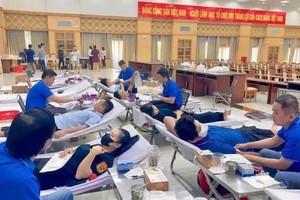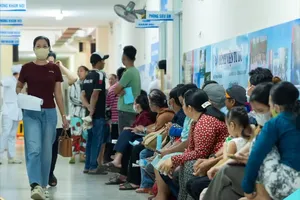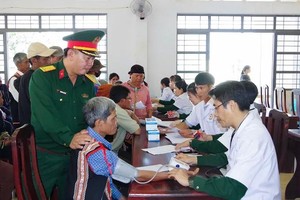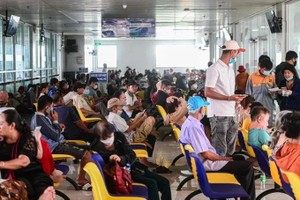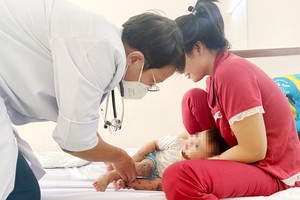
The Center for Disease Control (CDC) Khanh Hoa yesterday said that the province had just recorded 1 case of infection with avian influenza A/H5.
According to the Center for Disease Control (CDC) Khanh Hoa, 21 year old student at Nha Trang University living in the school dormitory became ill on March 11 with symptoms of fever and mild cough. The patient self-medicated but his symptoms did not abate.
On March 15, the patient returned home and only had contact with his mother and sister, then went for a medical examination at facility 2 of Ninh Hoa Town Medical Center and was diagnosed with acute pharyngitis - laryngitis and dengue hemorrhagic fever. He was given medications for treatment at home.
However, one day later, the male student had a high fever, abdominal pain around the navel, loose stools. He was admitted to the Emergency Department of Ninh Hoa Town Regional General Hospital and was diagnosed with intestinal infection, sepsis with warning signs. Then, he was transferred to the local hospital’s Department of Infectious Diseases for treatment.
By March 17, the student’s health condition became severe so the patient was transferred to Khanh Hoa General Hospital.
Test results of samples from Nha Trang Pasteur Institute on March 20 showed that the patient was positive for influenza A/H5. The patient is currently isolated for treatment at Khanh Hoa Tropical Diseases Hospital while his condition became worse.
Dr. Ton That Toan, Deputy Director in charge of Khanh Hoa CDC, said that after receiving epidemiological information, Khanh Hoa CDC has made a list of 14 officials at the provincial General Hospital and 6 officials at the Tropical Hospital to monitor their health. Moreover, examination and treatment areas and transport vehicles were disinfected.
At the same time, healthcare workers instructed the patient's relatives on epidemic prevention measures. Currently, the health condition of the patient's mother, aunt and sister are being closely monitored by the local health sector.
The room and dormitory building at Nha Trang University, where the patient studied, were also disinfected with Chloramin B. Some six roommates and 60 students studying in the same class are also being monitored for their health.
According to the Deputy Director of CDC Khanh Hoa, the unit is monitoring contact and related cases and urgently investigating to find the source of infection.
For avian influenza viruses, the primary risk factor for human infection appears to be exposure to infected live or dead poultry or contaminated environments, such as live bird markets. Slaughtering, defeathering, handling carcasses of infected poultry, and preparing poultry for consumption, especially in household settings, are also likely to be risk factors. A few influenza A(H5N1) human cases have been linked to consumption of dishes made with raw contaminated poultry blood.
An especially notorious strain is the HPAI influenza virus H5N1, which has a mortality rate of approximately 60 percent and which has resulted in numerous hospitalizations, deaths, and significant economic loss.


